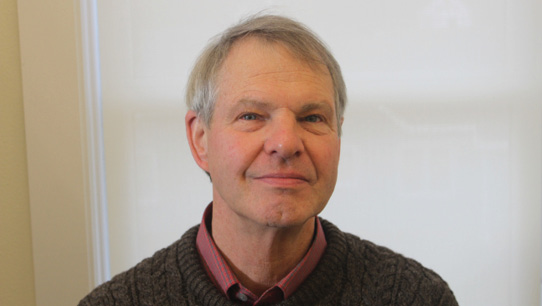Where is the Prairie?
We call Rootstalk “a Prairie Journal of Culture, Science, and the Arts.” A few words, then, about the word prairie. We think of prairie as the ecosystem that dominated North America’s central portion, roughly from Illinois to the Rocky Mountains and from southern Canada to Texas. It comprised thousands of species of plants, animals, and microorganisms in soil, water, and air, all shimmering in a web of life. But note the use of the past tense. Much has changed in the prairie region.
Rootstalk’s published in Iowa at Grinnell College, and the fact of the matter is that in Iowa and contiguous states, the prairie has virtually disappeared. An overwhelming human presence has risen, bringing with it industrial agriculture on a scale unprecedented anywhere. In 1850, tallgrass prairie covered 80 percent of Iowa; today, less than one-tenth of one percent of the original Iowa prairie remains—surely one of the most rapid and complete destructions of an ecosystem in human history. So: what does it mean to say Rootstalk is a prairie journal?
Here’s our answer: we resolutely believe prairie remains a living presence in the actions and thinking of those who live here. Prairie ecosystem processes took thousands of years to make the Midwest’s soils among the most productive in the world. Farming is paradoxically both the main beneficiary of the prairie ecosystem and the primary cause of its demise. Midwestern agriculture is a direct consequence of the prairie ecosystem.
Another prairie legacy is the region’s characteristic settlement pattern: a blanketing of family-run farms, a scattering of small and mid-sized towns, and a few larger cities. This is how agricultural production and the population supporting it were organized, and it reflects also how that production was marketed. In recent decades we’ve seen the pattern shifting: farms are fewer and larger, and many small towns are shriveling while cities grow.
For 150 years, agriculture—hence the prairie—has shaped the region’s human presence. From the planned removal of the Indians and the influx of white settlers, to the later arrival of African-Americans to work in the coal mines and factories, the region’s myriad peoples and stories have all been impacted by the prairie. As agriculture began its mid-twentieth century pivot toward industrial methods of production, people left farms for cities. Latinos entered the region to accept difficult jobs in the meat-packing industry, and many with advanced educations departed for the coasts. Artists, writers, and musicians documented and commented on the changes in the region, and through time religious leaders sought to address the spiritual needs of those experiencing all of these changes.
To us at Rootstalk, then, the prairie is an ecosystem, but much more. The prairie is a geographical region host to generations of rich and sometimes difficult history. It is a suite of memories and ideas about wholeness, diversity, loss, conflict, community, and change. Today, many in the region are working to protect and restore prairie. Perhaps this is a harbinger of and model for a broader renewal in a challenged region.


